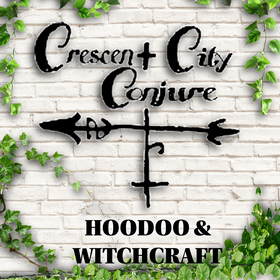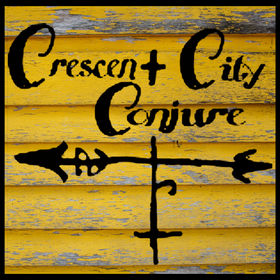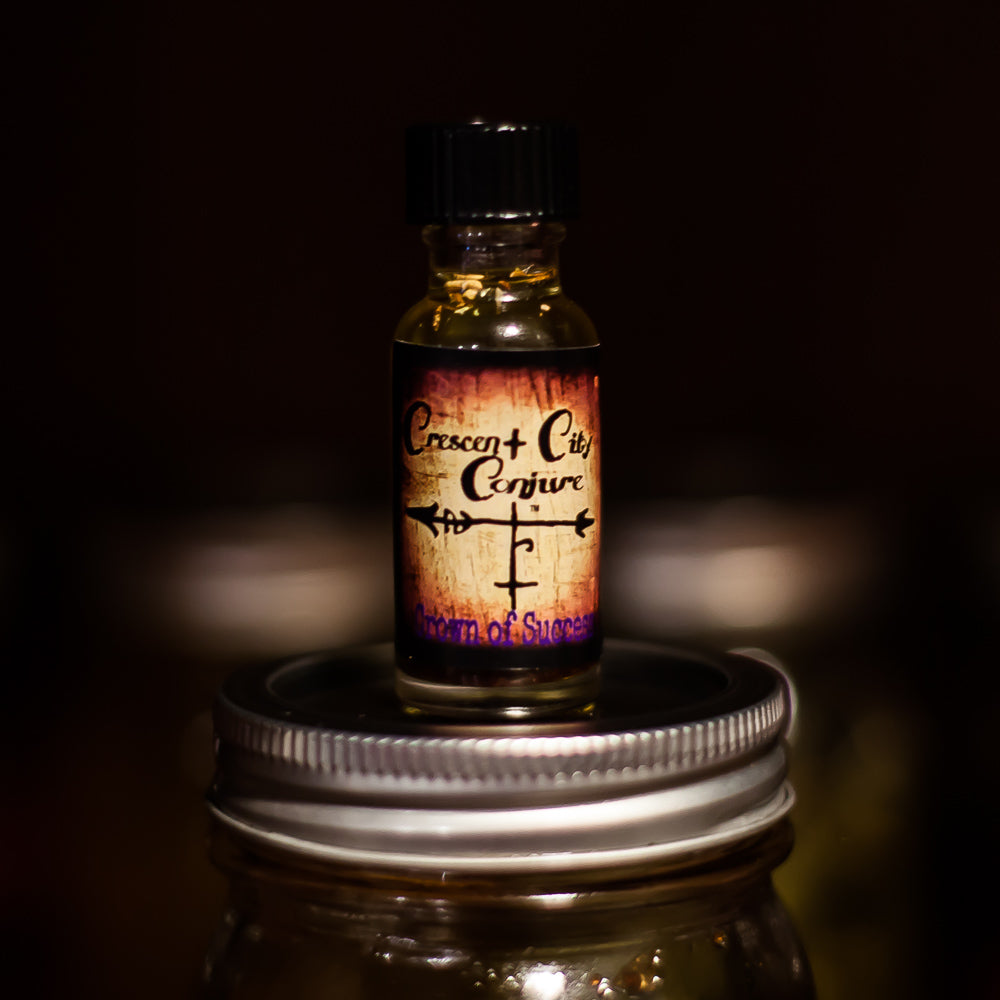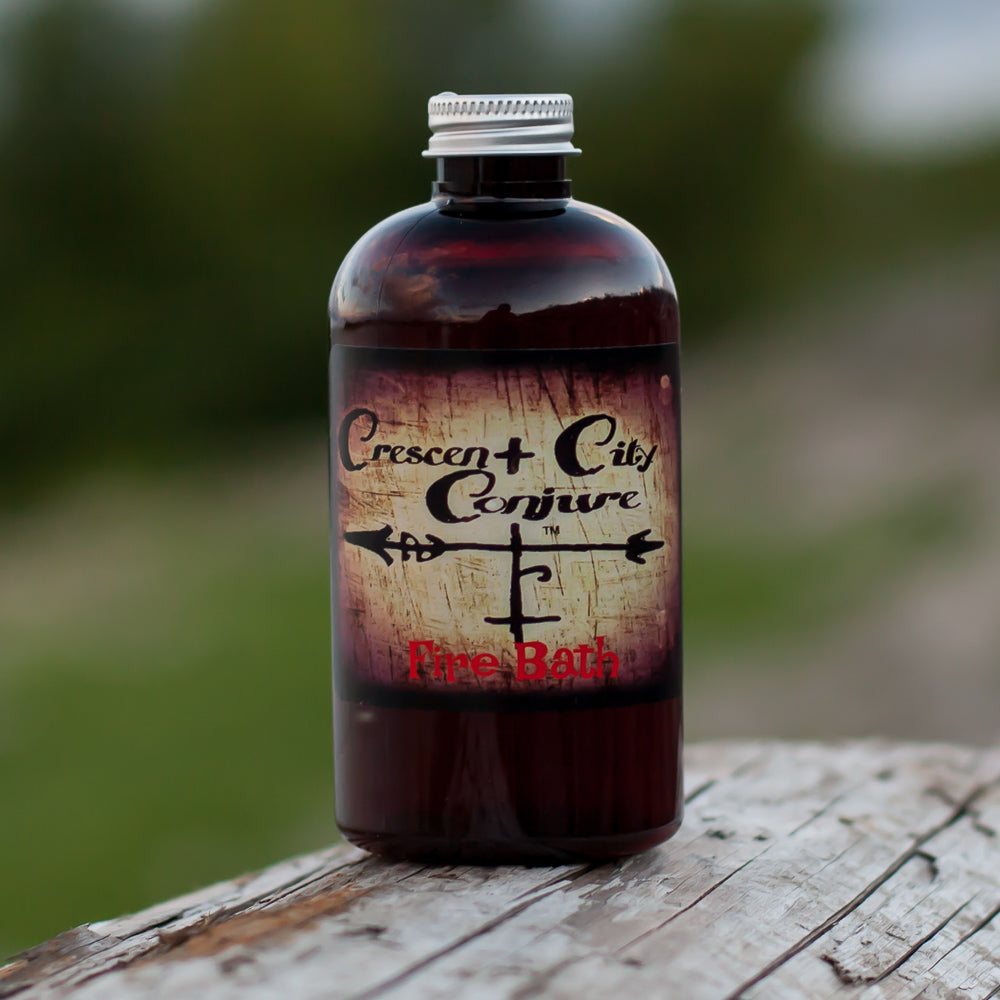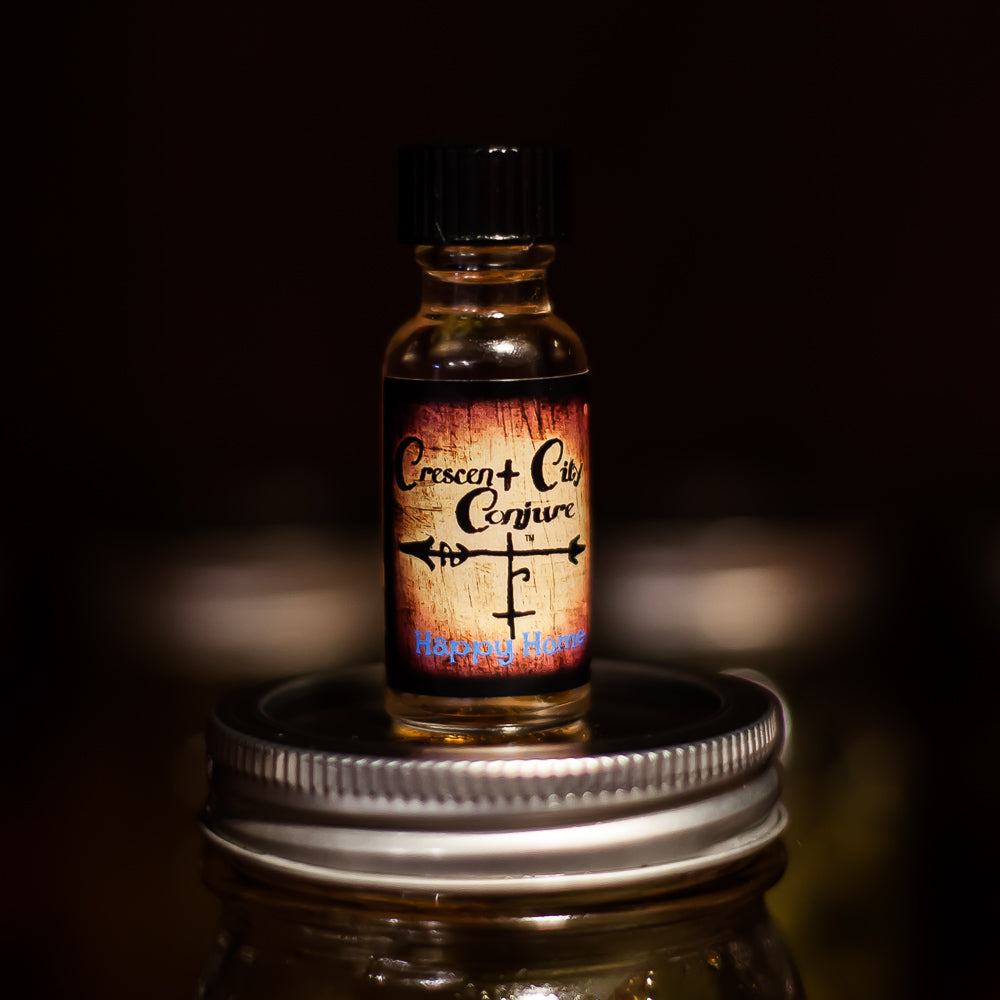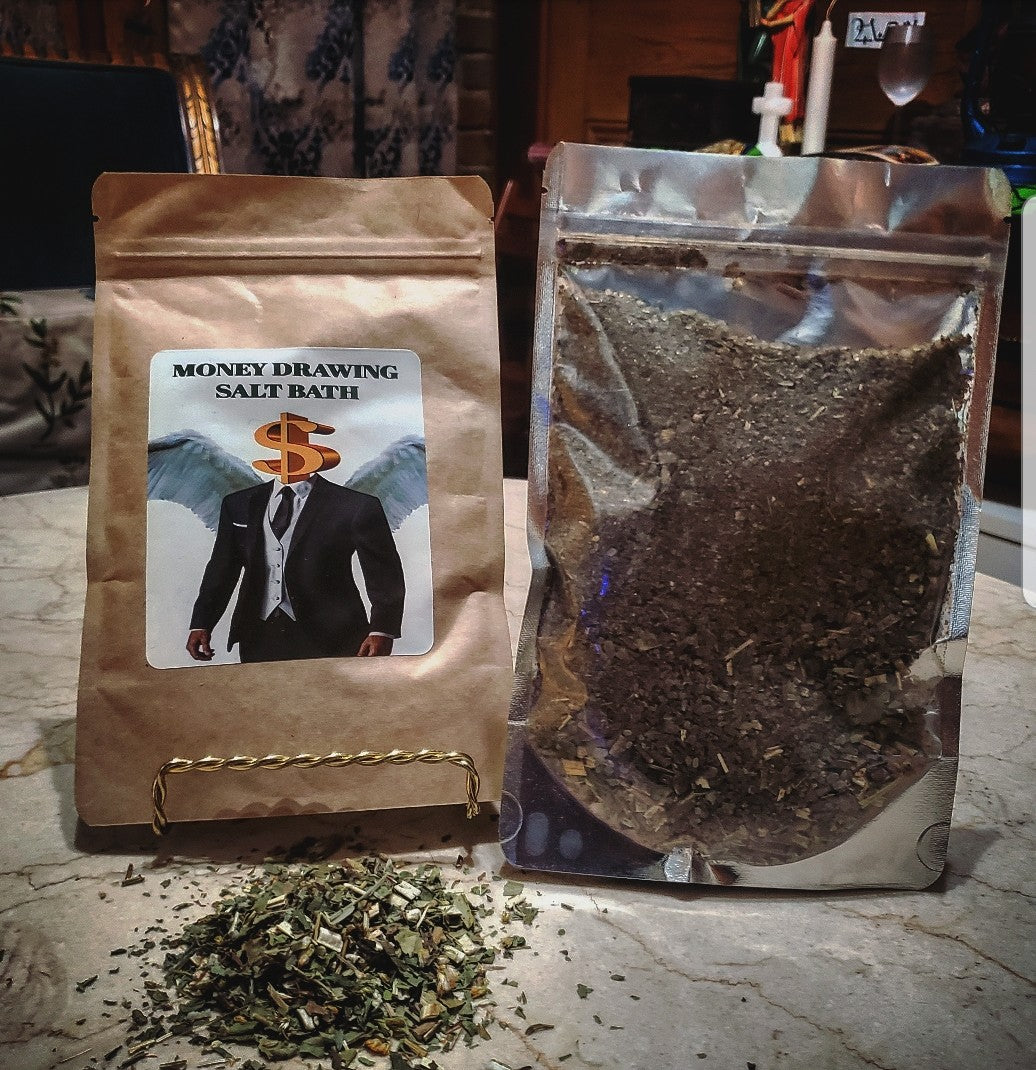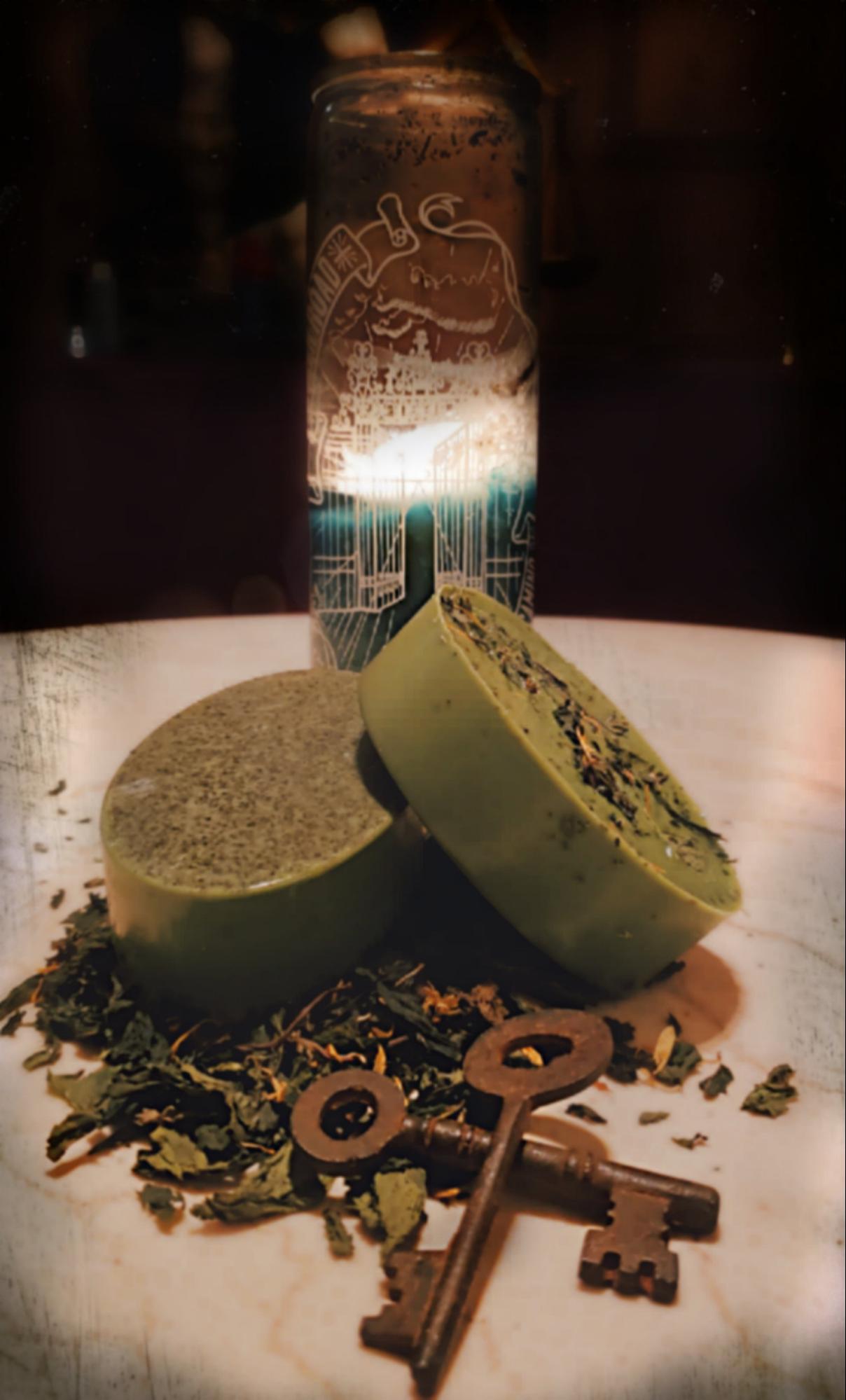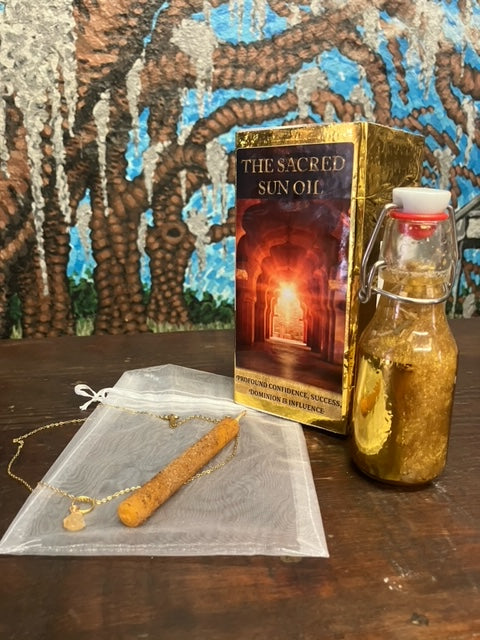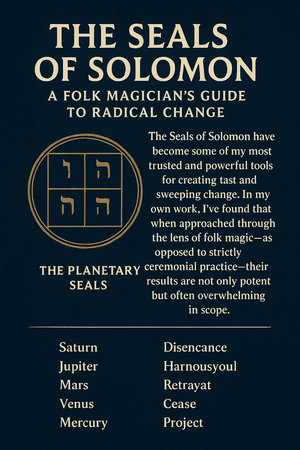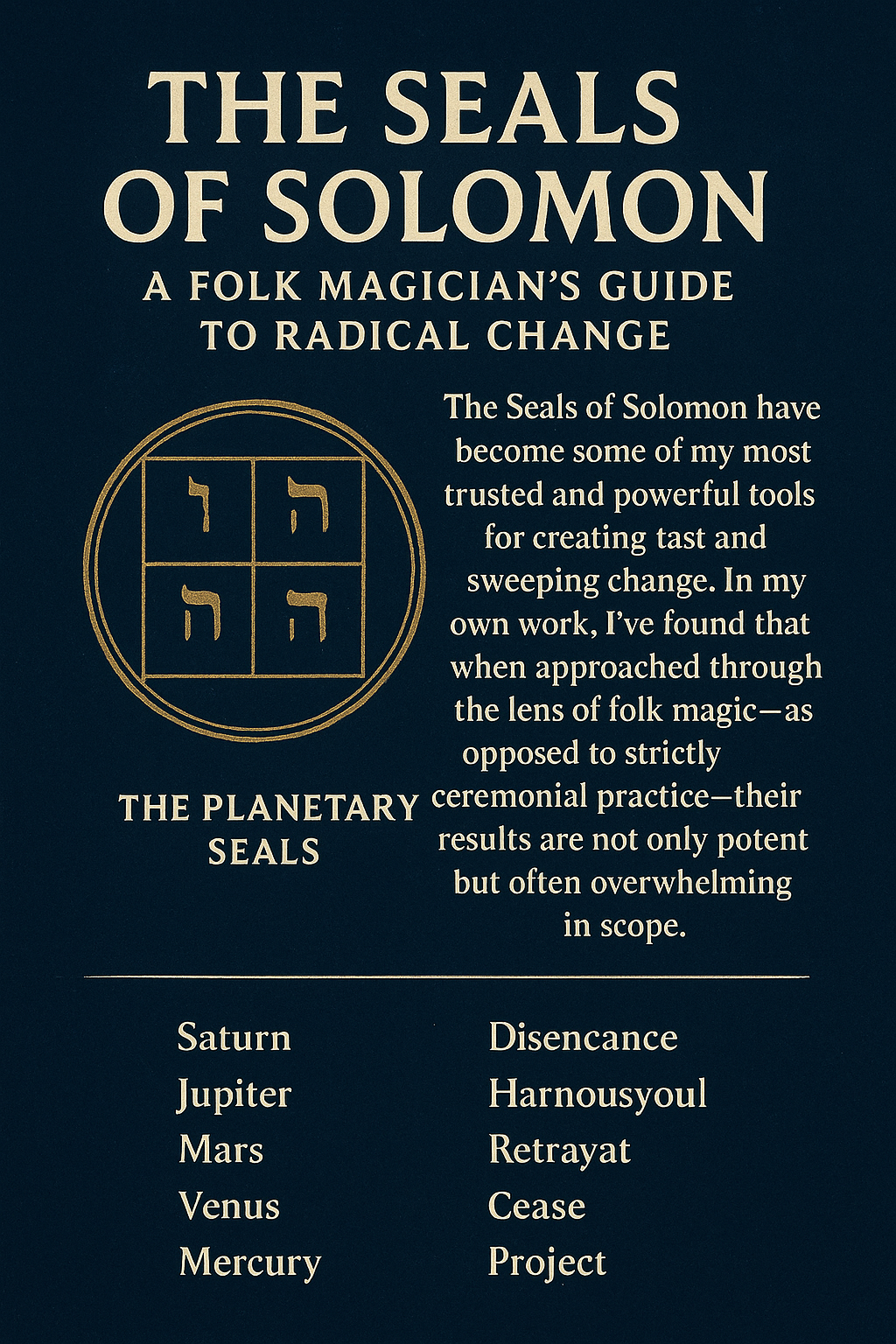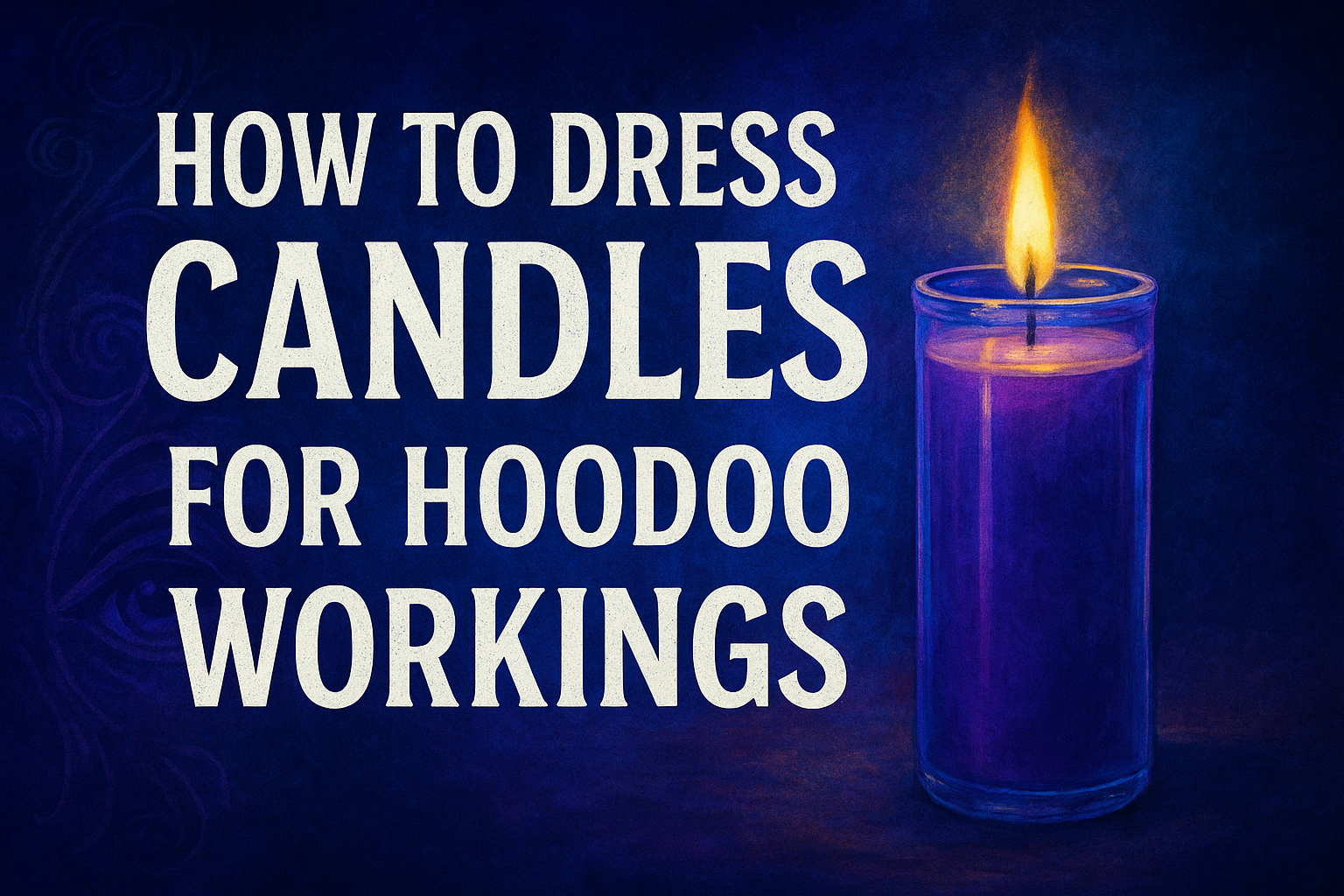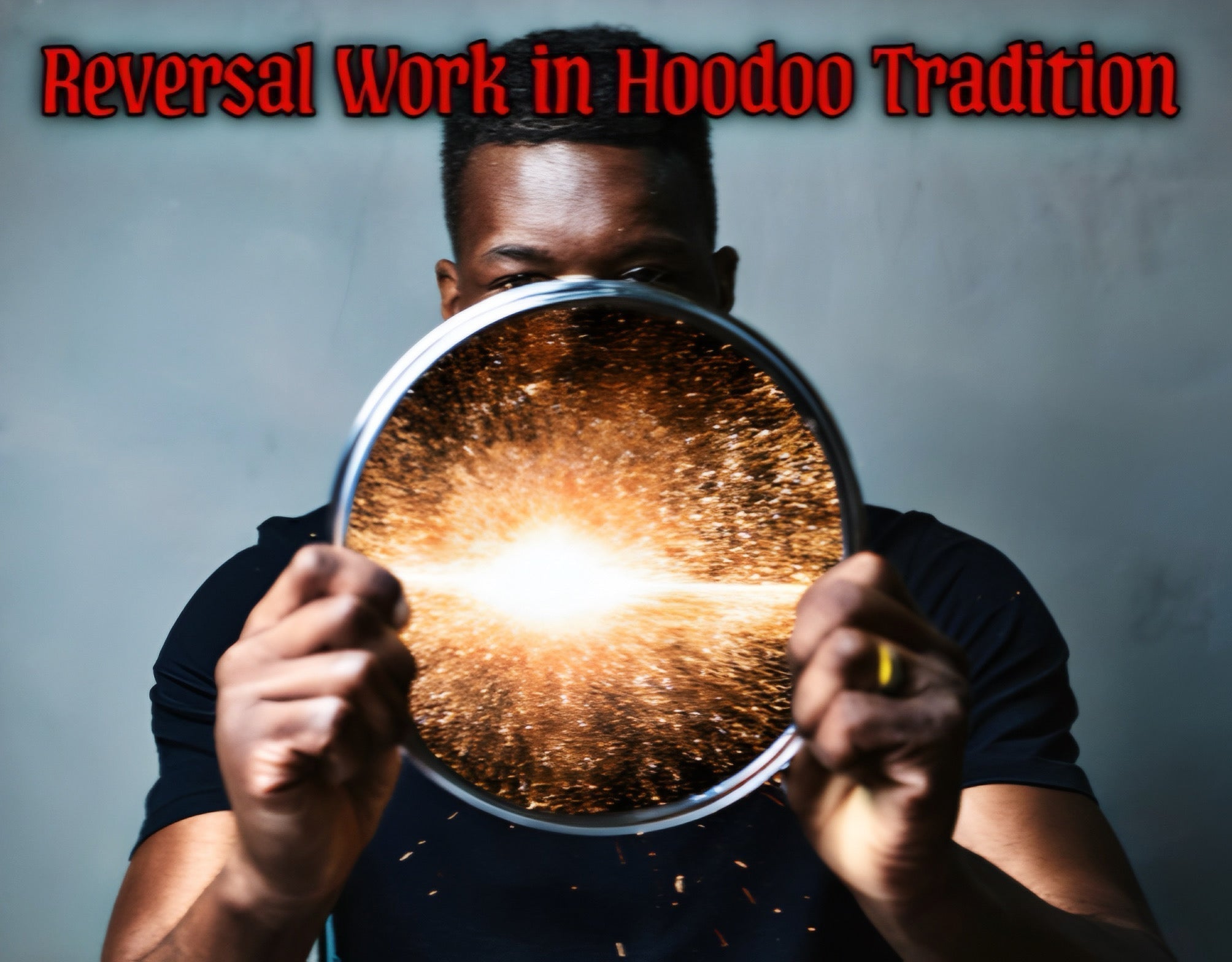Hoodoo (also known as rootwork or conjure) is an African American folk magic that has strong roots here in the South. The history of hoodoo practice and how it began is a powerful story of survival against incredible odds. The story begins in the 1500s when the the triangular trade route of the transatlantic slave trade was used to transport more than 10 million enslaved Africans across the Atlantic Ocean to the Americas.The men and women who survived the journey lost everything. The only thing that couldn’t be taken from them was their spiritual beliefs. The spiritual practices of the slave community evolved in the New World due to necessity and through the communal sharing of knowledge among themselves, Native Americans, and Europeans settlers. The results of their combined knowledge and wisdom was passed on orally from generation to generation and became known as the tradition of hoodoo.Our ancestors knew that there is power in all of God's creation. The Earth and all living things that inhabit the Earth have a spirit. Every plant and animal has a signature.
At one time hoodoo, root-work and conjure was an obscure practice. There weren't many books on the subject and those who practiced it didn't have much interest in sharing the details of their work with the world. African American folk magic was kept in the family, being passed down orally from elders to the next generation. The spiritual beliefs that can be found in hoodoo folk practice were intertwined with religious beliefs and there wasn't much distinction between the two. Families that carried this hidden knowledge incorporated it into their everyday lives seamlessly.

The distinction, or lack thereof between folk spiritual belief and religious practice illustrates just how ingrained hoodoo is in African American culture. Everything in African American culture from our music to our food reflects and ties back into an older worldview. Nowadays, the younger generation who have a desire to learn about these practices are having a difficult time finding authentic information on the subject. The information that is readily available to them is often misleading and it doesn't ring true to something they instinctively know in their hearts. Young folk are now looking everywhere for answers without knowing that they might have been exposed to it their entire lives. In a way, we have forgotten this old wisdom, but we are beginning to remember. For black people, hoodoo is more about remembering than it is about learning, although there is much to be learned.
As our elders grow older and pass away, their knowledge is fading away with them. This presents a new challenge for this generation of conjure workers. We are losing the encyclopedia of rituals, workings and insight that our elders possessed, leaving us to stitch together a picture of our own practice as best we can. There is a huge gap between the earlier generation of practitioners that came before us and the reigniting of interest in this generation, creating a large learning curve that has to be overcome before we can continue to build on what our ancestors started. Although there are “through-lines” which make up the bones of the tradition, The specific workings and practices of African American folk magic were and still are very much unique to each household and family.
In the past, if you did have the opportunity to talk to a family about the work itself, the discussion would be short and lost on those who didn't have context for it. Hoodoo wasn't something that was taught in classes, it was something that was experienced in daily life. Through the connections with one's family, community and the divine, the diverse system of practice was learned. Those who were in the know talked amongst themselves about healing methods, charms and tricks exchanging knowledge amongst each other, but it didn't stay that way for long.

The outside world began to take notice of these subtle practices within the African American community. In 1935 the American government created The Federal Writers Project. The purpose of the project was to provide new jobs for Americans during the Great Depression. Journalists were sent out to observe what was happening in places where hoodoo was most practiced and shared. The journalist talked to locals about their spiritual beliefs and formed a picture in their minds about what it was and how it developed. The observers recorded what they could. The documents that were gathered offered insight, but because they did not belong to the culture that hoodoo arose from the “spirit” of hoodoo could not be conveyed properly.
The information that was recorded by outsiders was published and more people became aware of a secret practice that was known by African Americans. Researchers delved even deeper in the history of hoodoo and began to understand how it found its way to America. Books were written and published, further sharing details of the work with the world. Much of the love and passion that existed through and behind what was being shared couldn't be put into words because it only existed in the hearts of the folks who carried it. You could find pharmacies that sold hoodoo recipes which were nothing more than colored water or placebo powders, further diluting true practice.
The commercialization of hoodoo products, particularly in a pharmacy-style format, has a complex history intertwining cultural practices and business dynamics. A unique aspect of this commercialization involves the significant participation of Jewish merchants in the development and distribution of these products, especially during the late 19th and early 20th centuries.

1. Historical Context of Pharmacy-Style Commercialization
The transition of hoodoo from a primarily oral and community-based practice to a commercial enterprise can be traced back to the late 1800s. As urbanization increased, especially in Southern cities, so did the demand for accessible spiritual and medicinal products. This led to the establishment of shops, often run by immigrant communities seeking to capitalize on the local market. Jewish merchants, prominent in many urban centers, began to play a crucial role in this developing landscape.
2. Role of Jewish Merchants
Jewish involvement in the commercialization of hoodoo was particularly notable in cities like New Orleans, where both Jewish and African American communities coexisted. Many Jewish shop owners recognized the burgeoning interest in hoodoo practices among diverse populations and began to stock and sell products that appealed to these customers. They provided pharmacy-style items, including herbal remedies, oils, protective talismans, and spiritual supplies that mirrored the traditional practices of hoodoo.
3. Merging Cultural Practices
Jewish merchants often adapted their business practices to cater to the needs of hoodoo practitioners. This included creating products that resonated with both cultures, such as combining Jewish mystical traditions with hoodoo spells and remedies. In doing so, they contributed to an exchange of knowledge and practices that enriched both communities. This blending of cultural elements is seen in offerings such as ritual candles, medicinal herbs, and protective charms that drew from both Jewish and African American spiritual traditions.
4. Packaging and Distribution
The pharmacy-style commercialization of hoodoo products also involved the standardization of packaging and branding. Jewish-owned shops often used eye-catching labels and marketing techniques that highlighted the purported effectiveness of these items. This marketing strategy not only appealed to local customers but also attracted wider audiences, including those outside the African American community who were curious about hoodoo.
5. The Impact of Mail Order Businesses
During the mid-20th century, mail-order catalogs increasingly featured pharmacy-style hoodoo products, further expanding their reach. Jewish entrepreneurs capitalized on this trend, often operating businesses that specialized in spiritual supplies and botanicals. They recognized the growing interest in hoodoo as a form of folk magic and marketed their products as effective solutions for various personal and spiritual needs.
6. Modern Implications
Today, the legacy of Jewish involvement in the commercialization of hoodoo products is still evident. Many contemporary outlets continue to cater to a diverse clientele interested in hoodoo and other spiritual practices, often blending elements from multiple traditions. While this commercialization has led to a wider availability of products, it also raises important questions about cultural appropriation and the commercialization of sacred practices.
The origins of pharmacy-style commercialization of hoodoo products reveal a rich interplay between Jewish and African American cultures, particularly in urban settings. Jewish merchants played a pivotal role in the development and distribution of these products, contributing to the broader landscape of spiritual practices. This historical partnership reflects the complexities of cultural exchange and the ways in which traditions can evolve and adapt within a commercial context. Understanding these origins is essential not only for acknowledging the contributions of various communities but also for ensuring that the practices remain rooted in their cultural significance.

Today, hoodoo has become popular and there are many books, websites and businesses that claim to share or teach hoodoo. Unfortunately, much misinformation has been spread and the real power of this old tradition has been lost in translation. In this book, I want to share my personal experience of hoodoo in hopes of addressing some of the misinformation. I hope to convey the intense connection with African ancestors and the relationship with nature, community and spirit that operates through this folk magic.
This book is an intimate look into how African American people have survived and overcome the unique challenges they were faced with in the new world, beginning with those who survived slavery and continued to practice their original faith. I am going to explore several aspects of hoodoo including the worldview that colors belief, the relationship between magic and religion, modern practice and old school practice in a way that is hard to find in recent material. Folk magic isn't stagnant, it evolves with the culture it lives in. As the times change we have to re-examine the practice from a perspective which first honors the origin, then reconciles popular misconceptions and finally pieces together a more complete picture. I’ll also provide recipes, tricks and charms, but my main goal is to offer another voice on the subject for you to consider.
While hoodoo does have African roots, the wisdom of the original ancestors has spread and now spans across many cultures and races. It’s important to understand that the evolution of hoodoo in America took place across the country and its practice is different within each family and household that carries it. Although each rootworker has their unique recipes andworkings, there is a through line which forms a unified tradition. In this book I will discuss my personal practice and the practice of hoodoo as a whole following the commonalities that can be found in the work. The spiritual practice of hoodoo centers around ancestor veneration, holistic healing and faith in a higher power. Many of the original recipes focused on maintaining good physical health and spiritual cleanliness expressing a deep need to recover from generational scars. Many of these healing modalities are no longer talked about or shared in favor of entertaining hexes and magical workings. The spirit of hoodoo does include the work of conjurers, spirit communication and magical workings but that work happens in the context of a larger perspective.
I will discuss the different aspects of hoodoo and how they relate to one another. We will explore how these complementary aspects work together to form a complete picture. It’s impossible for us to go back and know exactly how this practice formed because much of the interactions were not recorded and have been lost to history, but there are a couple of very important documents that I will be sighting in this book because of there insight into African American life ( insert details) I recommend further study using these documents as source material.
In these writings I hope to express a passion for preserving the authentic roots of African American folk magic. Our ancestors are returning through a new generation and it is up to those who can hear their voices to follow their direction and reclaim our heritage. I hope that everyone who reads this book is inspired to discover the magic that resides in their bloodline because everyone has a conjure man, cunning person, midwife, witch or magician in their family tree that they can call on and work with.

Hoodoo, often referred to as rootwork or conjure, is a deeply rooted African American folk magic tradition that has flourished in the Southern United States. The history of hoodoo is a powerful narrative of resilience and survival against overwhelming odds. Its origins can be traced back to the 1500s, when the transatlantic slave trade forcibly transported more than 10 million enslaved Africans to the Americas. Stripped of their homes, families, and identities, these individuals faced the brutal reality of enslavement. However, their spiritual beliefs—rooted in rich African traditions—remained untouchable, becoming a source of strength and community.
In the New World, the spiritual practices of these enslaved individuals evolved out of necessity and communal knowledge-sharing among themselves, as well as with Native Americans and European settlers. This convergence of cultures led to the rich tradition we now recognize as hoodoo. Our ancestors believed in the power present in all of God's creation; they understood that every plant and animal possessed a spirit. This understanding formed the foundation of their spiritual practices, which were passed down orally from generation to generation, creating a living heritage that emphasizes connection to nature and the divine.
Historically, hoodoo was not a widely recognized or documented practice. With limited literature on the subject, those who practiced it often kept their rituals private, passing down their wisdom within families orally. The original lack of documentation illustrates how intertwined hoodoo was with daily life; the spiritual beliefs and practices were seamlessly woven into the cultural fabric of African American existence. It was not merely a set of rituals but a way of life that was shaped by historical trauma and enriched by community bonds.
Despite its rich heritage, younger generations seeking to learn about hoodoo often struggle to find authentic, reliable information. Misinformation saturates the available literature, obscuring the genuine roots of these practices. Many young people may feel drawn to hoodoo, instinctively sensing its importance, yet they often lack the resources to understand it fully. This disconnection presents a challenge, as the wisdom of older generations is fading away with them. As our elders pass on, so too does the vast encyclopedia of rituals, insights, and techniques essential to hoodoo. This generational gap creates a steep learning curve for those eager to reconnect with these ancestral practices.
Hoodoo was traditionally learned through life experience rather than formal education. Practical teachings were shared in family discussions and community gatherings where the intricacies of healing methods, charms, and rituals were exchanged among trusted individuals. However, as the outside world began to take notice of hoodoo, this practice faced new challenges. In 1935, the U.S. government initiated the Federal Writers Project to provide employment during the Great Depression. Journalists were sent to document the spiritual beliefs and practices prevalent in communities where hoodoo thrived. Although this initiative brought attention to hoodoo, many of the insights captured by outsiders failed to convey the authenticity and spirit of the tradition.
The information disseminated through these government reports and subsequent publications often diluted hoodoo's true essence, sometimes presenting falsehoods alongside genuine practices. These documents, while historically significant, could not encapsulate the emotional depth and lived experiences of those who practiced hoodoo. The commercialization of hoodoo products began to take shape in this context, with pharmacies and shops marketing formulas that lacked the spiritual potency of traditional practices. Consequently, the genuine power of hoodoo became obscured, overshadowed by mass-produced items that failed to honor its cultural significance.
The transition of hoodoo to a commercialized folk practice further involved Jewish merchants who played a crucial role in the distribution of these pharmacy-style products during the late 19th and early 20th centuries. Urbanization in Southern cities created a growing demand for accessible spiritual and medicinal supplies, fostering an environment in which Jewish shop owners recognized the interest in hoodoo practices. In places like New Orleans, where Jewish and African American communities coexisted, Jewish merchants began to stock products reflective of hoodoo traditions, including herbal remedies, oils, and spiritual supplies.
These merchants often merged their own cultural practices with hoodoo, creating a unique blend that enriched the traditions of both communities. Their businesses marketed hoodoo items with eye-catching packaging and clever branding, reaching audiences beyond the African American community or those who were familiar with hoodoo. This adaptation not only expanded the reach of hoodoo into the broader market but also introduced new perspectives, fostering a dynamic exchange of spiritual knowledge.
Today, hoodoo is experiencing a resurgence in popularity, with numerous books, websites, and businesses claiming to teach its practices. Unfortunately, much of this modern literature is riddled with misinformation, further complicating the genuine understanding of this profound tradition. The essence of hoodoo, rooted in a deep connection with African ancestors, the natural world, and the spirit community, risks being lost amid the commercialization.
Hoodoo arose from a culture of survival and secrecy, and the desire to live and to be successful were common themes throughout all aspects of this form of African American folk spirituality. The concepts and ethics that continue in the hoodoo tradition center around the need to soldier forward regardless of adversity. Hoodoo is often compared to other popular forms of folk magic because of their similarities, but in comparing it, you miss the rich and colorful roots that created this multifaceted spiritual work. Hoodoo is unlike any other form of magic, it has its own story that is organic and grows with the people who protect and perpetuate its wisdom and power.
While hoodoo has strong African roots, its wisdom has transcended boundaries and spread across numerous cultures and races. The evolution of hoodoo in America has been influenced by countless experiences, making its practice unique within each household that carries it. There exists a common thread running through these practices, a spiritual lineage that emphasizes ancestor veneration, holistic healing, and faith in a higher power. Many original recipes focused on maintaining health and spiritual purity, seeking to heal the generational scars left by oppression.
As a new generation awakens to these ancestral voices, it becomes imperative for us to honor their guidance and reclaim our heritage. I invite everyone who reads this to discover the magic inherent in their bloodlines, recognizing that within each family tree lies a conjurer, a cunning person, a midwife, a witch, or a magician ready to be called upon.
This blog post delves into the history and cultural significance of hoodoo, an African American folk magic tradition that emerged from the experiences of enslaved Africans. It highlights how hoodoo evolved through communal knowledge-sharing among African Americans, Native Americans, and European settlers, becoming an integral part of their spiritual identities. The commercialization of hoodoo led to misunderstandings and misrepresentations of its true essence. Ultimately, the post emphasizes the need to reconnect with ancestral wisdom and restore the cultural practices of hoodoo to foster healing and empowerment in today's society.
